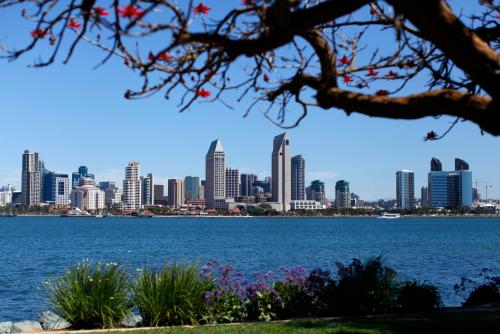When one thinks of foreign-owned companies operating in the United States, large manufacturing firms such as Honda and BMW come to mind. Yet in the 100 largest metropolitan areas, only 1.3 percent of foreign-owned establishments have more than 500 employees, and three-quarters of large metro areas have fewer than 10 such establishments. Thus, while efforts to attract large foreign firms might capture headlines, strategies to secure and expand foreign investment in the middle market—generally defined as firms with $10 million to $1 billion in revenue and at least 20 employees—represent the sweet spot for metro area foreign direct investment (FDI) efforts.
This was one of the lessons that emerged from the work of six metro areas—Columbus, Ohio; Minneapolis-St. Paul; Portland, Ore.; San Antonio; San Diego; and Seattle—that recently completed global trade and investment plans as part of the Global Cities Exchange. This and other insights from the process are captured in the report, The 10 Lessons From Global Trade and Investment Planning in U.S. Metro Areas, which will be the subject of future writing in our Metropolitan Innovations Series.
Heraeus, a German-owned medical component manufacturer in Minneapolis-St. Paul, exemplifies the middle market. It is a sophisticated operation that employs 400 workers, develops innovative products as a supplier to leading global firms, and exports a quarter of its output. It clearly benefits from the backing of a major multinational. Yet, at the same time, it operates as a fairly autonomous establishment that faces many of the same challenges as smaller firms. It competes for expansion capital with Heraeus locations in Puerto Rico, Costa Rica, and Singapore, and has to compete for talented engineers in a market dominated by local heavyweights such as 3M and Medtronic.
Firms like this—poised for rapid expansion but hindered by a few identifiable barriers in local or international markets—represent the bulk of potential new global business activity that can be influenced by metros. Middle-market firms may benefit from individualized support (the state has helped Heraeus with duty drawbacks on raw material imports, for example), but in interviews those firms emphasized that they also rely heavily on strong regional assets such as workforce, clusters, and infrastructure.
Middle-market firms make up a substantial portion of FDI activity. The targets of mergers and acquisitions are often mid-sized firms that offer proven products, an established presence in the U.S. market, and export networks. “Greenfield” investments, those that involve opening new sites, also tend to start out as mid-sized establishments: San Diego and Minneapolis-St. Paul found that they averaged 27 and 35 employees, respectively, at the time of entry. By identifying these firms and working to bolster their competitiveness, metro areas can, as Columbus found in the market assessment for its trade and investment plan, establish “incumbency for future location decisions related to distribution, R&D, manufacturing, or regional headquarters.” These are not trivial opportunities: In the average year from 2001 to 2011, expansions of existing foreign-owned firms created twice as many jobs as new greenfield investments.
As our colleagues have written about before, export strategies, like FDI strategies, should also revolve around mid-sized firms, which accounted for 21 percent of exporters in 2013. Export success requires an innovative product, adequate capital, and committed leadership. Large multinationals have these characteristics, but they typically don’t require export services because they are well-resourced and experienced in global business. Many middle-market firms—those that have a solid foothold in the domestic market, already export (at least sporadically), or are foreign-owned—also possess these characteristics, but are often under-exporters that need assistance to meet their potential. Firms also generally need to be at least mid-sized to have adequate resources to fully commit to global expansion over the long term. Resource availability is crucial because the benefits of exporting don’t appear until firms become relatively export-intensive and economies of scale emerge (one study of services exporters identified this threshold as 18 percent of output). Pushing small firms to export, conversely, can be counterproductive: In part due to the sunk costs required to begin exporting, firms that jump in and out of export markets perform worse than those that never export at all.
Metro areas developing export and FDI strategies face pressures to produce the big job gains and revenue growth that only the largest firms can deliver, while also being inclusive of startups and small businesses. Mid-sized firms are often lost in the shuffle, even though they represent some of the best opportunities for metro areas to retain and grow globally competitive companies that offer a significant wage premium over their domestic peers.
The Brookings Institution is committed to quality, independence, and impact.
We are supported by a diverse array of funders. In line with our values and policies, each Brookings publication represents the sole views of its author(s).











Commentary
Recognizing the global opportunity in the middle market
May 27, 2015